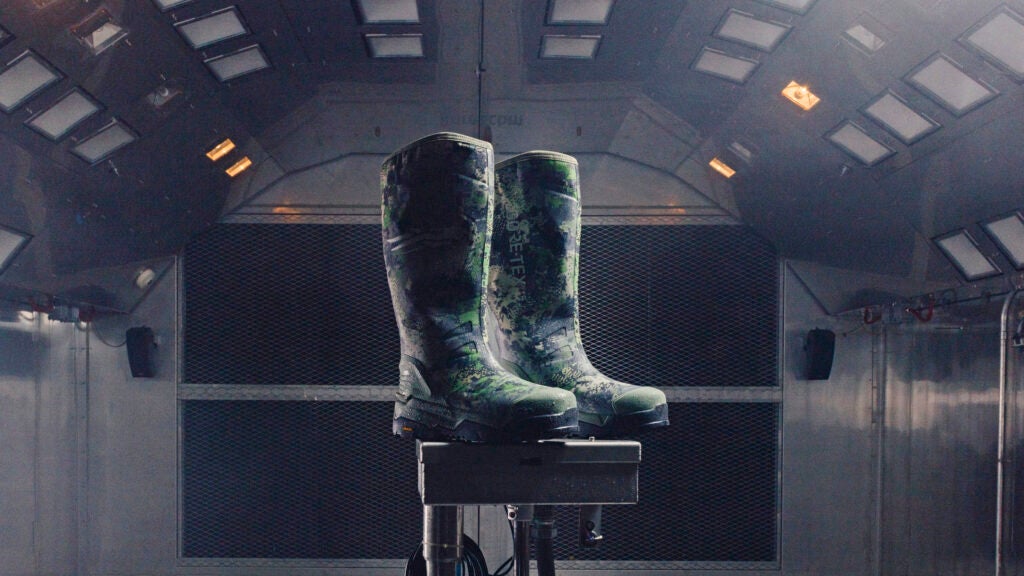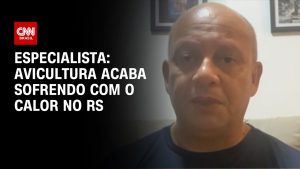Mud season. Dealing with spring snowmelt, rain, mud, and muck is what brings the American Northeast, Southeast, and Northwest—and most places in between—together. If you live outside of an urban center and spend your time outdoors, odds are you own a pair of boots for mud season. Rubber boots are ubiquitous where I live in Bozeman, Montana. Knee-high rubber boots like the popular Xtratufs go on easy, provide sure protection from mud, snow, and water. Paired with good insulation, rubber boots can keep your feet warm through sub-zero temperatures. But knee-high rubber boots are also heavy, don’t breathe at all, and are often so clunky they’re a pain to walk in.
I wear rubber boots daily. I’m about to pull on a pair of my Lacrosse Alphaburly Pro 1600Gs ($230) and traipse through gross ankle-deep snow melt while running afternoon errands around town. The Alphaburly Pros are the absolute warmest boot in my collection, but also the heaviest and clunkiest.
When my backyard isn’t socked in with feet of snow, I keep a pair of lightly-insulated Xtratufs ($225) by the back door, and reach for them to chase a dog around or grab something from my truck. They’re a lot lighter than the Lacrosse boots and track a lot less mud into my kitchen, but the Xtratufs are prone to holes and tears.
I keep a set of insulated Bogs ($150) at the cabin. Bogs are super easy to put on—perfect for when one of my dogs needs to go outside to pee at a moment’s notice. But their generous dimension also mean they don’t hold your foot securely through more active wear.
I keep a pair of fancy leather-lined Le Chameu Chasseurs around as sort of my going out rubber boots. But at $650, those aren’t exactly a practical choice, and even at that spend, forego any insulation, so are again relegated to spring and summer wear only.
No matter the weather or activity, my feet get a little damp in every one of these boots. Rubber boots are utilitarian and stout, but I have yet to find the perfect pair. Montana-based Sitka Gear is trying to change that.
Sitka, a high-tech apparel brand that’s making the leap from its hunting roots into more general outdoorswear, has never made a shoe or boot before, but for their first foray into footwear they’re aiming to make a better muck boot. Rather than rubber construction, these new VentLite boots ($399, on-sale now) are made from a waterproof-breathable Gore-Tex membrane housed in a layered textile shell that works a lot like a modern rain jacket.
“Sitka really hangs its hat on providing a systems-based approach to technical apparel,” says Mike Ekstrom, the company’s new footwear product line manager. “And how can you have a full body system if you don’t have footwear?”
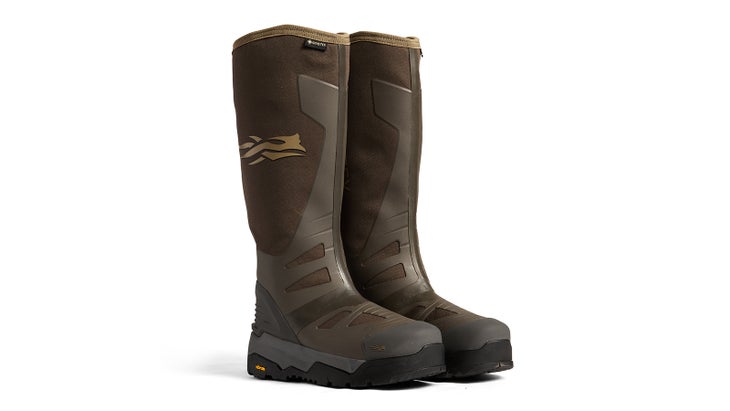
From the inside out, Ekstrom says the boot is constructed using a four-millimeter thick neoprene liner, then a layer of Primaloft Gold insulation, followed by the Gore-Tex membrane and a high-denier textile shell fabric with a DWR coating. Ekstrom says that outer fabric is similar to the one used in some of Sitka’s pants. Mapped polyurethane overlays add abrasion and penetration resistance to key areas, while low-wear areas go without the protection in order to maintain breathability.
The result? “They don’t become a bucket of sweat,” Ekstrom says.
Before joining Sitka, Ekstrom pitched for Major League Baseball teams including the Padres, Rays, and Rockies, then spent nine years managing athletic shoe lines for Nike. So it’s no surprise that his new boots “fit more like a sneaker,” says Ekstrom.
Cold water conducts heat away from your body 25 times faster than air. Companies judge technical apparel by its ability to wick sweat away from the skin. Staying dry is crucial to staying warm through cold weather. As a result, Ekstrom explains that Sitka achieves equivalent warmth to very heavily insulated all-rubber competitors in a lighter, slimmer boot.
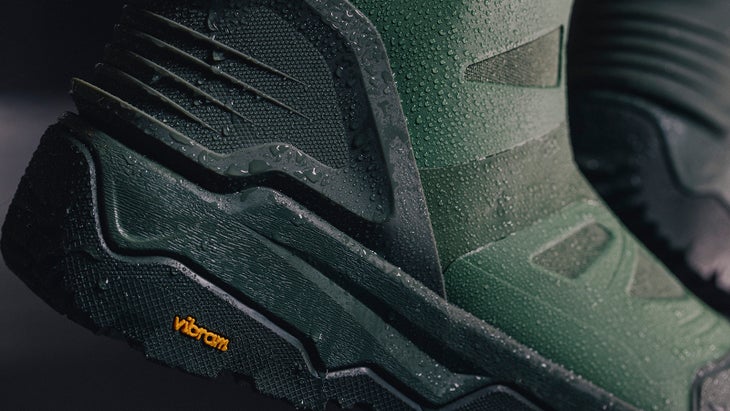
Ekstrom says Sitka benchmarked the Lacrosse Alphaburly Pro 1,600G during development, which combines heavy-duty rubber construction with 1,600 grams of Thinsulate insulation. Where a single Lacrosse boot weighs 45 ounces, Sitka says the Ventilate measures just 35 ounces.
Sitka is the first company to employ Primaloft’s new 1006f insulation material in North America. Ekstrom is hesitant to quote a grams-per-square-meter figure out of concern that customers may simply compare that number to heavier alternatives, and come away with the mistaken impression that other boots will be warmer.
“What we’ve found through lab testing is [breathability] creates a more efficient way to provide warmth,” Ekstrom says.
Also unlike existing designs—which pack insulation around the foot only, leaving only your socks, long underwear, and pants to provide insulation from your ankles up—Sitka has carried its layered construction throughout the entire 18-inch height of the boot. Not only does packing more insulation add to the boot’s warmth, but Ekstrom says it also delivers a “uniform fit and feel throughout the boot.”
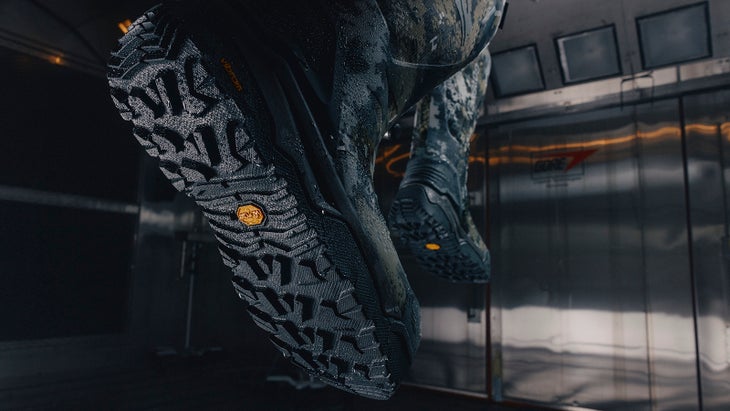
For traction, Sitka tapped Vibram for its latest Litebase Megagrip outsole, adding its own proprietary A-shaped lugs to the central portion of the tread. Ekstrom explains that this will be a hallmark across a growing range of footwear Sitka plans to build out in the near future.
What’s next? “We want to complete the head-to-toe systems wherever Sitka shows up,” Ekstrom says. “[VentLite] is just the starting point.”
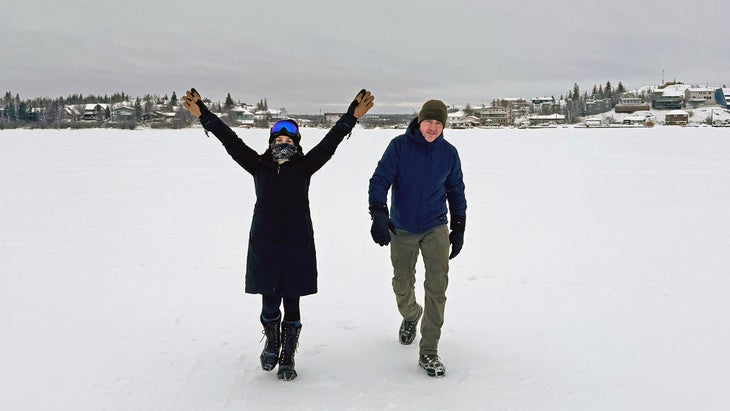
Wes Siler grew up on a horse farm in England where it was his job to collect the manure. Rubber boots helped a lot, until the manure got inside them. Wes now writes about important topics like politics and vehicles on Substack, where you can also talk to him about those topics and more.



